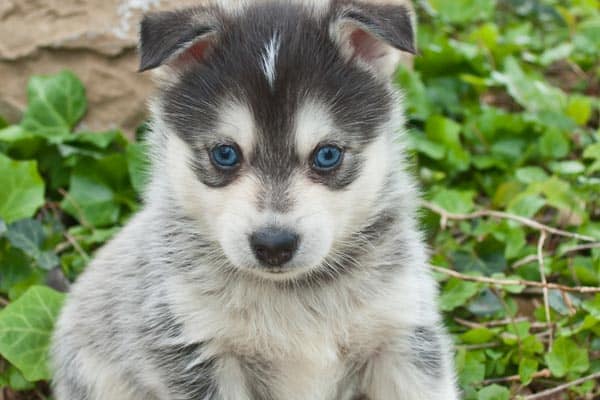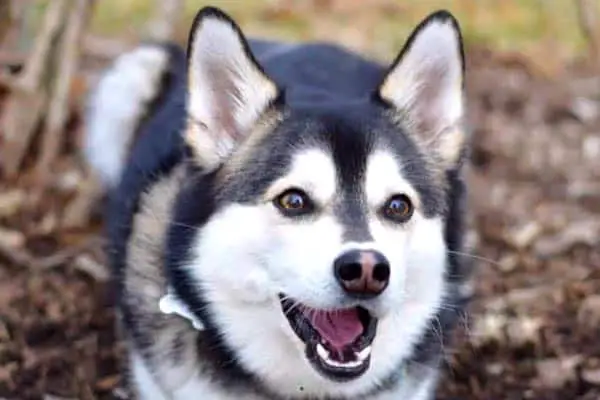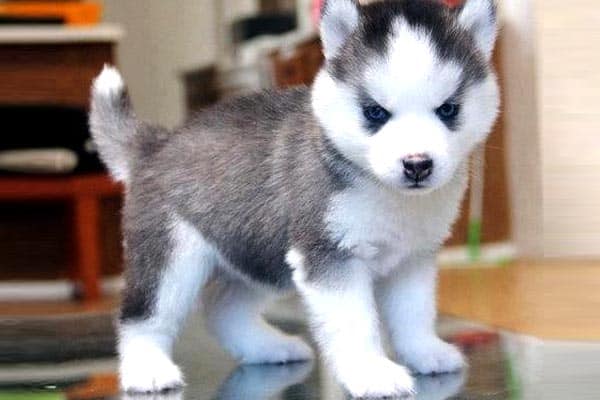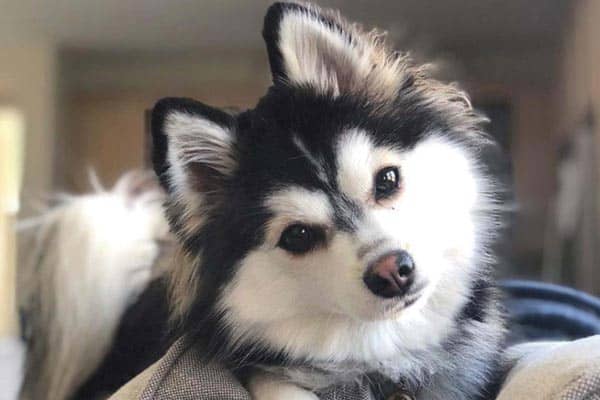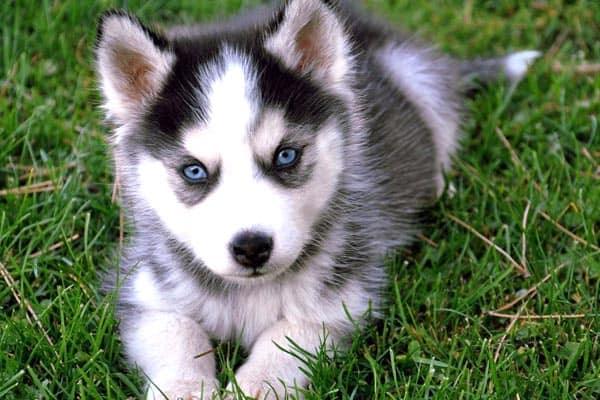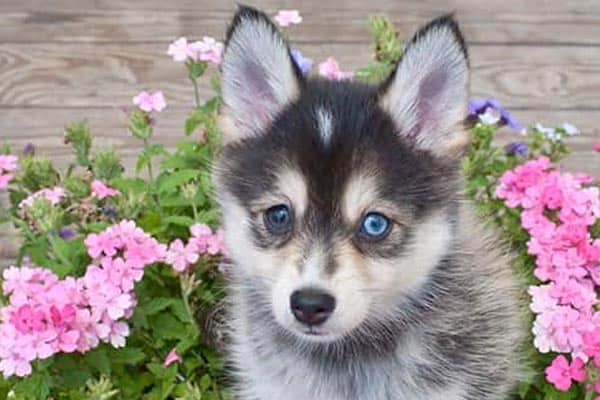Do Pomsky Need a Lot of Exercise: What to Expect When You Get a Pomsky
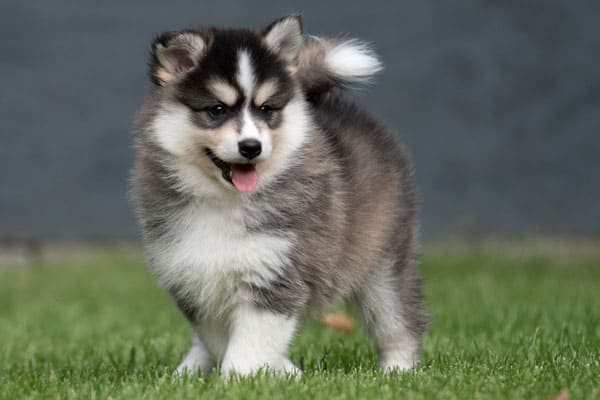
The Pomsky is one of many hybrid or designer dog breeds that are becoming more popular today.
While the topic of hybrid dog breeding continues to be somewhat controversial, it shouldn’t be. Nearly all so-called “purebred” dog breeds that are well-known today started through hybrid dog breeding (also called crossbreeding).
The Pomsky has one Siberian Husky dog parent and one Pomeranian parent, which is how the nickname Pom-sky got started.
In this article, find out more about the Pomsky dog’s energy level, personality, and temperament and what your dog will need to be healthy and happy living with you.
Does Pomsky Need a Lot of Exercises?
Pomsky dogs have a medium energy level, but due to their hybrid nature, energy levels can vary between individual puppies, even in the same litter. It’s crucial to talk to the breeder to choose a puppy that suits your lifestyle. Pomskies require about an hour of daily exercise to stay fit and prevent boredom. Their small size makes them suitable for apartments, as long as they get regular walks or visits to a dog park to burn off energy.
A Brief History of the Pomsky Dog’s Working Dog Parents
The Pomsky crosses the purebred Siberian Husky and the purebred Pomeranian dog breeds.
The Siberian Husky
According to the American Kennel Club (AKC), the Siberian Husky is currently the 14th most popular purebred companion canine in the United States (out of 196 breeds).
But considering that the Siberian Husky is a working dog with a high energy level, this means there are a lot of Husky dog parents out there who have to take their pup for long runs each day!
Siberian Huskies come from a long and ancient lineage of spitz-type working dogs bred to haul cargo and sleds, help with hunting, and live and work with packs of dogs and people.
These dogs are endurance athletes with thick, double-layer coats that can run all day and not tire. So this is approximately half of the lineage your Pomsky will inherit.
The Pomeranian
Weighing just three to seven pounds when fully grown, the Pomeranian dog is not now and has never been a true working dog breed.
But as the American Kennel Club (AKC) recounts, these dogs used to be much larger – weighing around 30 pounds in adulthood.
It wasn’t until Queen Victoria spotted the breed during her travels and decided to breed Pomeranians that they became so tiny.
This is important because even though Pomeranians are tiny, they are also descended from the same spitz-type lineage from which the Siberian Husky comes. They have the same double-layer working dog coat. And they are very energetic.
The reason Pomeranians are not as active as Huskies is because they have very short legs, and they get tired more quickly. But basically, the Pomsky inherits a working dog energy level from the Pomeranian and the Siberian Husky parent dogs.
Is There Any Way to Predict How Energetic a Pomsky Will Be?
Because hybrid dog breeding is less predictable, you may not know precisely how energetic your Pomsky puppy will grow up to be until that day arrives.
If you need a lower-energy Pomsky, seek a later-generation hybrid dog breed that breeds F2, F2b, F3, or later Pomsky litters. This will give you more clarity regarding how lively your Pomsky will become as they grow up.
Assuming your Pomsky will have a moderate to high energy level, we can determine what types of exercise are appropriate and how much exercise the typical Pomsky adult dog will need.
What Types of Exercise Can a Pomsky Do?
According to the Pomsky Owners Association, a typical Pomsky will grow up to weigh between 20 and 30 pounds and stand 10 to 15 inches tall (paw pads to shoulder girdles).
It usually takes about a year before your Pomsky will be fully grown. And this is critical to remember because you don’t want to exercise your puppy too intensely until they are finished growing.
Be sure to have your veterinarian do X-rays of your Pomsky at around one year old to verify that the growth plates (soft cartilage at the end of each long leg bond) have closed and hardened. Then you can play and run and exercise together safely.
Once your Pomsky is finished growing, you can enjoy the following types of exercise:
- Running and jogging.
- Taking hikes and long walks.
- Agility courses.
- Rally.
- Obedience.
- Interactive playtime (fetch, tug-of-war, et al.).
Safety Notes for Exercising Your Pomsky
Here are some important safety notes to consider if this is your first time caring for a Pomsky dog.
Smaller dogs need to eat and drink more frequently
Because there can be some variability in a Pomsky dog’s adult size, weight, and height, it is essential to remember that smaller Pomskies may need to eat and hydrate more frequently to keep their energy levels up.
Smaller dogs may have more fragile bones
If you have a small Pomsky, you may want to talk with your dog’s veterinarian about whether it is safe to allow your dog to jump. Pomeranians are so small with such little bones that they can break bones jumping up and down.
Pomskies have a cold-weather coat and can quickly overheat
Another trait you can know your Pomsky will inherit is the thick, double-layer working-dog coat. You can know this because both purebred parent dogs have it!
The one variable you may see is that your dog’s coat may be shorter if the Siberian Husky parent’s genetics have more influence and longer if the Pomeranian parent has more influence. But either way, that coat will be double-layer and thick.
This working dog coat is great if you live in a cold climate because your Pomsky will already have their winter coat on whenever you want to go outside together.
But Pomskies can quickly overheat if they go outside and exercise strenuously when it is hot outside. And while you might be tempted to shave your dog’s coat, this will permanently damage the coat and remove its protective properties.
Instead of shaving the coat, which will cause the inner insulating layer and the outer protective, water-resistant layer to intermingle when the coat grows back, consider opting for a short puppy clip if your Pomsky has the long-haired Pomeranian coat.
Otherwise, the best practice is to avoid exercising outside during the hottest part of the day. Aim for early or after-dusk hours when it is more relaxed and your dog is much less likely to overheat.
What Length of Time Does a Pomsky Need to Exercise Daily?
Once your veterinarian has cleared your Pomsky to do more strenuous exercise and more extended periods of exercise, you can start enjoying the outdoor life together.
As Brookside Pomskies breeder explains, the more exercise and playtime you can give your Pomsky, the healthier your dog will likely be and the longer your dog may live.
This needs to be moderated according to your dog’s energy level. Your Pomsky will have much more energy as a young adult than a senior dog.
For general purposes, you can start with this daily routine and adjust it up or down based on the signals you observe your dog giving you.
Aim for at least one 20-minute walk or jog every day. Do two energetic sessions with interactive play such as tag, tug-of-war, or fetch. Space two or three training sessions throughout the day for extra enrichment.
For more active Pomskies, add a second 20-minute walk or jog to ensure you tire your pup out before bedtime.
Another fun thing to do is enroll your Pomsky in canine athletics such as rally or agility. These dogs are athletic and agile and can enjoy learning such skills.
Life with an active dog breed like the Pomsky will keep you both fit and healthy so you can enjoy the great outdoors together.
Watch a Pomsky Running An Agility Course
As you can see from this short YouTube video captured by a professional K-9 trainer, Pomskies have lots of energy! And they are outstanding athletes!
